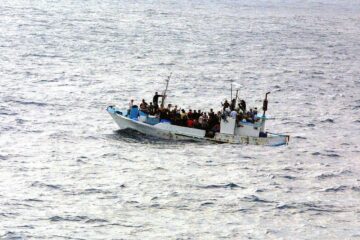![]()
Introduction:
The New International Economic Order was a powerful campaign which was launched at the international level and the main objective that this campaign sought to achieve was the transformation of the global economic order[1]. It had great moral visions behind it, the driving principles being economic self-dependence and self-determination and sovereign equality especially when it came to the sovereignty over the natural resources and along with that, it focused on mutual benefit, enlightened self-interest, interdependence, and cooperation. But yet the bona fide intentions, good-will and the moral conscience were insufficient to forge the New International Economic Order into a workable legal entity and the force of law was required. Law was an important aspect of the NIEO for, as President Luis Echeverrı´a of Mexico stressed in 1972, ‘‘it is necessary to take co-operation out of the realm of goodwill to crystallize it in the field of law.’
Genesis
The self-awareness that was generated in the Afro-Asian countries, after the process of decolonization and attainment of independence led the demand for a revised international economic order. The attainment of political and economic independence along with freedom would have been meaningless if there was no eradication of the poverty coupled with the economic development and self-reliance. These were the major motivating factors behind the non-alignment movement and the demand for a new international economic order.
The economic situation that was created after the end of World War II and the decolonization of the countries of Africa, Asia and Latin America can be best depicted by the Centre-Periphery model. The Developed First World Countries formed the ‘Centre’ while the Third World Countries remained the ‘Periphery’ of the economic order prevalent at the time[2]. The legal position of the New International Economic Order was contested by the First World developed countries. There was a deep-rooted impact of imperialism on international law and thus, to reform the same law was a challenge. On the other hand, to unite the support within the third world countries towards a new order was a challenge in itself.
Although the political origins of the NIEO date back to the year 1955 when the Bandung Conference was held, and the principles like sovereign equality of states, non-interference and cooperation were recognized at the international level. The Third World Countries at that level as well were well aware of the importance of international law in furthering the idea of decolonization and development. The Asian African Legal Consultative Organization (AALCO) an intergovernmental organization which was a forum of cooperation on legal matters among Asian and African states was established after the Bandung Conference and it served as an advisory body and played an important role in bringing up issues of the third world countries at the level of UN. As an aftermath of the Bandung conference, the Countries of the third world joined together to create the Non-Aligned Movement and the Group of 77. This is how the foundations for the NIEO were laid[3].
It is hard to trace the origins of the notion New International Economic Order but official recognition of the term can be precisely dated because it was the result of two very important resolutions- the United Nations General Assembly of 1 May 1974 concerning, respectively, the Declaration on the Establishment of a New International Economic Order (resolution 3201 (S-VI)) and the Programme of Action on the Establishment of a New International Economic Order (resolution 3202 (S-VI)). Apart from this recognition at the official level, it can be traced back to the United Nations strategies for development launched in the early 1960s, the debates that took place on international trade and international development law. This declaration envisaged in its very text, “to eliminate the widening gap between the developed and developing countries.”
The declaration was followed by the Charter of Economic Rights and Duties of States (CERDS) which was passed on 12 December 1974. This Charter provided for a legal framework to the principles of the NIEO and gave legitimate and binding effects to the goals and ideals of the NIEO. Thus the CERDS puts down the main principles and rules of international law which are, sovereignty, nonintervention, the prohibition on the use of force, in chapter 1 of the CERDS (under the heading ‘‘Fundamentals of International Economic Relations’’), in chapter 2 principles are laid down (under the heading ‘‘Charter of Economic Rights and Duties of States’’) and thus the legal and economic framework was laid down which were based on the fundamental principles and thus gave force to them.
Main Features of the NIEO
The New International Economic Order presented itself to be one of the major milestones on the road to giving more power to the third world countries with regard to economic independence and sovereignty. The way in which the third world countries came forward to represent themselves at the level of the international organizations to assert their rights is still unequalled in ways of both innovation and initiative. Despite, the challenges which were faced by the various countries of the global South (Third world countries) in the internal sphere and otherwise, the cooperation which was shown by them in uniting against the struggle to develop themselves in a post-colonial world is unmatched. The welfare of the people was given importance over the differences in the political and ideological matters.
No matter what the differences amongst the different developing states that were the major driving force behind the New International Economic Order on the political and economic front, they all agreed on two core principles firstly, for the nationalization of natural resources that were owned by foreign entities; and secondly, for the reformation of the trading system the goal of which was particularly to ensure better price for the commodities upon which Third World economies were so dependent, and ensuring the stability of the prices. The fulfilment of the goal of the NIEO requires major reformations in international law and international institutions.
At the very centre of the idea of the NIEO is the welfare and development of the developing countries and for that purpose, the very agenda of the NIEO seeks to reform the structure, governance, and norms of the global economy[4]. The Declaration of the NIEO calls for:
- An absolute right of states over the control, extraction and marketing of their domestic natural resources;
- The establishment and recognition of state-managed resource association to stabilize (and raise) commodity prices;
- The regulation of transnational corporations;
- No-strings-attached technology transfers from north to south;
- The granting of preferential (non-reciprocal) trade preferences to countries in the south; and
- The waiver of certain debts that states in the south owed to the north.
A combination of all these proposals made by the developing, newly-decolonized states made for the principle of “economic sovereignty” which was one of the core ideals of NIEO.
NIEO’S Intervention in the International Law
Asserting important reforms in the economic sphere is only one part of the NIEO’S agenda. Another sphere where the NIEO focused on the reformation of international law to make it less biased in the favour of the developed countries. The legal theorists of the NIEO viewed the present international law more in favour of the incumbent states and less favourable for the developing nations. They were of the view that in order to bring about important structural changes and for the implementation of the objectives through the machinery of international law. In a narrower sense, the proponents of NIEO believed that the agreements which were formed with the illegitimate transitional governments or that were entered pre-independence on their behalf should not be legally binding on the third world nations as far as they are unfair and biased towards their development at the behest of the first world nations.
Proponents of the NIEO have sought the perusal of the UN General Assembly for the purpose of promoting and developing new international legal mechanisms that would promote the agenda which is advocated by the South. The use of the UNGA for the promotion of the transnational legal changes made perfect sense due to the evolved political structure of the body. At the time of the formation of this body there were no distinctions between “north” and “south” as there were just 51 nations but slowly as more and more nations gained independence this body became more representative and within the UNGA, a group of 77 nations formed G-77 in 1968 at the second UNCTAD Conference and these countries shared a common subordinated position when it came to the economic position at the international level. Although there were some political challenges to the unity of the group but still it formed a united front inside the UNGA at the time of voting in relation to the developed nations.
Conclusion
The objectives and ideals with which the NIEO was established are almost forgotten at this point. The disparities that were there amongst the nations stand as they were and according to some scholars in the 1980s itself, the NIEO was doomed to failure. Some major reasons behind the failure of the NIEO were the lack of solidarity amongst the third world nations. The lack of solidarity meant that the economic pursuits were also destined to defection and hence the failure. The attempt to use the international law to restraint the autonomous sanctions on the first world countries was deemed to fail due to lack in the jurisdiction by certain forums. The North had always been on the forefront to suppress any efforts that were attempted by the South by way of economic, political and military power[5].
Although, the objectives of NIEO might not have been successful but the ideas propounded in the light of the NIEO continue to be visionary and farsighted and act as guiding light for the generations to come to put efforts in fulfilling their hopes and dreams.
References:
[1] http://humanityjournal.org/wp-content/uploads/2014/06/HUM-6.1-final-text-ANGHIE.pdf
[2] https://shodhganga.inflibnet.ac.in/bitstream/10603/86837/12/12_chapter%206.pdf
[3] https://legal.un.org/avl/pdf/ha/ga_3201/ga_3201_e.pdf
[4] http://humanityjournal.org/issue6-1/the-new-international-economic-order-a-reintroduction/
[5] https://media.africaportal.org/documents/The_New_International_Economic_Order.pdf



0 Comments